The Mariana Trench, the deepest part of the world’s oceans, is home to some of the most bizarre and frightening creatures on Earth. This dark, high-pressure environment has forced its inhabitants to evolve in strange and often terrifying ways. I find it astonishing that anything can live and hunt in the Maiana Trench. While these creatures might look like nightmare fuel, you’ve got to admire their abilities and adaptations.
From fish with transparent heads to nightmarish sharks, the Mariana Trench is a realm of biological wonders that seem straight out of a sci-fi horror movie. Here are 17 of the most nightmarish creatures found in this mysterious underwater world, surviving in one of the most extreme environments on our planet.
Frilled Shark
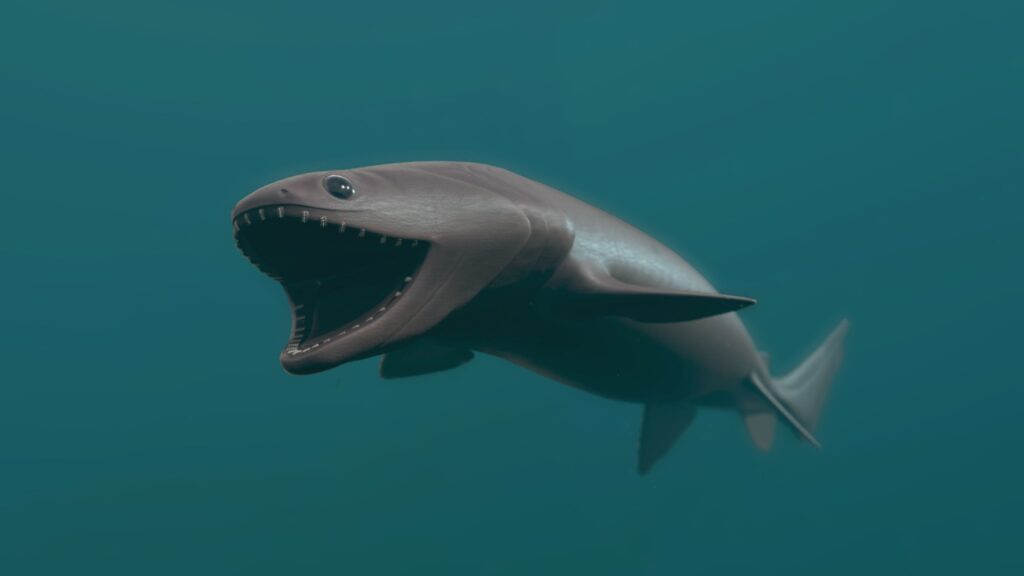
The frilled shark looks like it swam straight out of a prehistoric nightmare. With its snake-like body and 300 needle-sharp teeth arranged in 25 rows, this living fossil is a fearsome predator of the deep. Frilled sharks can grow up to 6 feet long and use their flexible jaws to swallow prey whole.
Goblin Shark
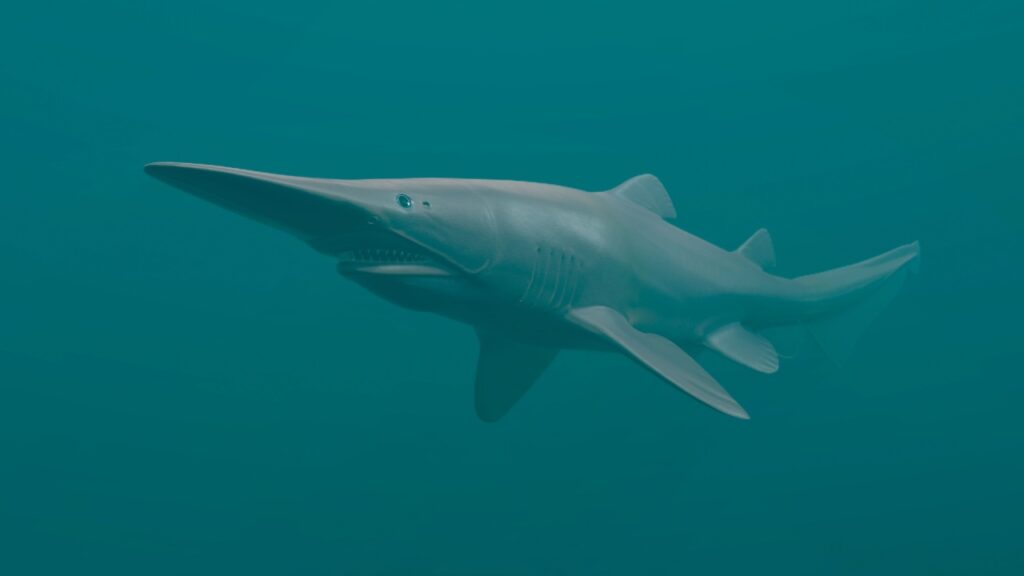
With its elongated, flattened snout and protruding jaws, the goblin shark looks like an alien creature. This rare deep-sea shark can extend its jaws forward to catch prey, much like the xenomorph from the “Alien” movies. Its pale, almost translucent pink skin gives it a ghostly appearance in the dark depths.
Giant Isopod
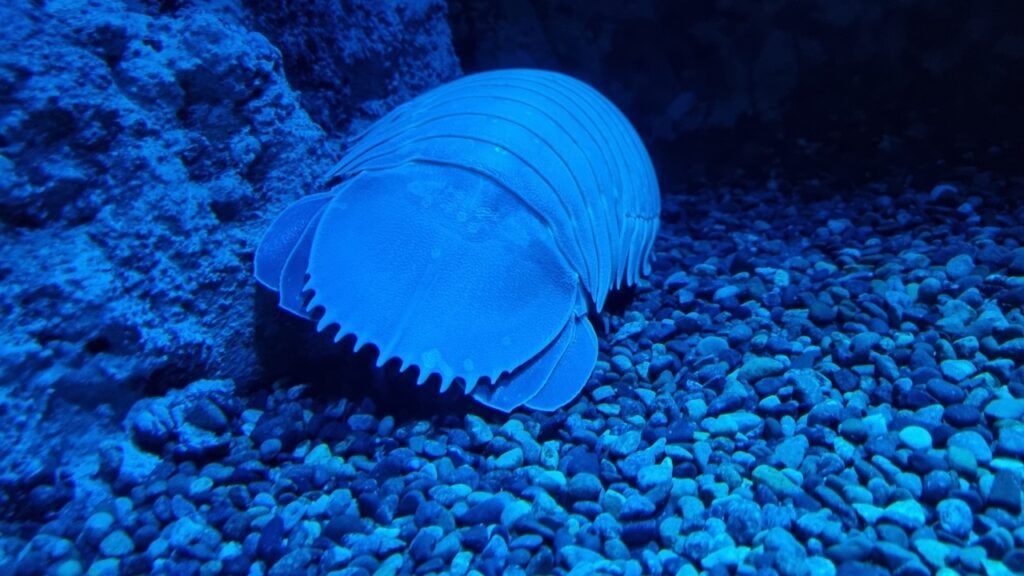
Imagine a pillbug the size of a house cat, and you’ve got the giant isopod. These enormous crustaceans can grow up to 16 inches long and are scavengers of the deep sea. With their armored exoskeletons and multiple legs, they look like something from a prehistoric era.
Dumbo Octopus
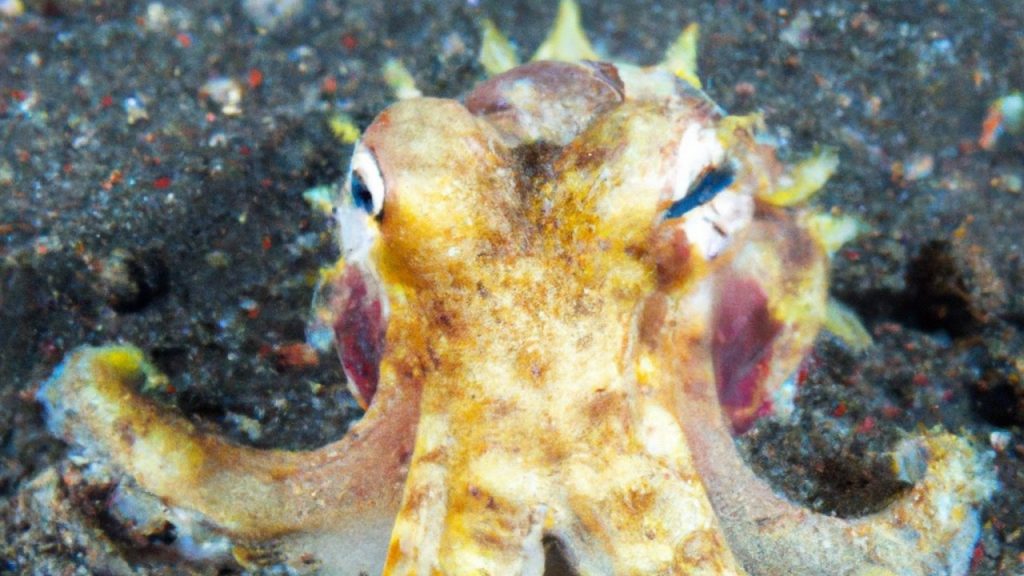
Named for its ear-like fins that resemble the ears of Disney’s Dumbo, this octopus might look cute at first glance. However, its gelatinous body and ability to inflate itself into a ball give it an otherworldly appearance. Dumbo octopuses are the deepest-living octopuses known to science.
Anglerfish
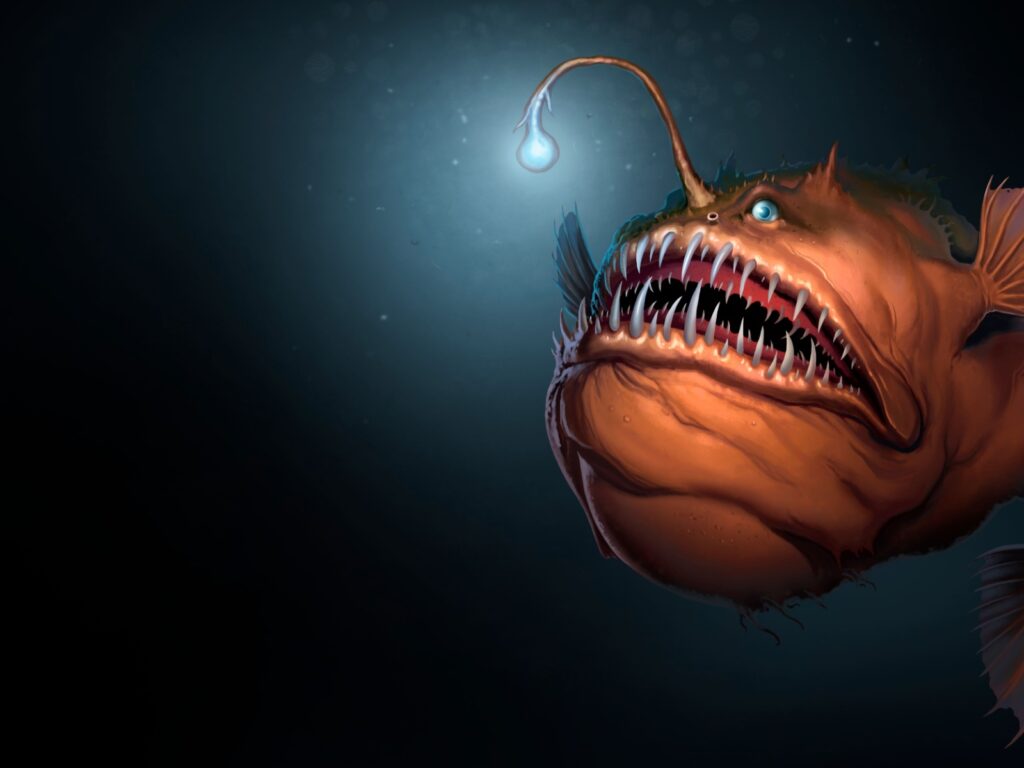
The anglerfish is perhaps one of the most recognizable deep-sea monsters. Females have a bioluminescent lure growing from their heads, which they use to attract prey in the pitch-black depths. Their enormous mouths filled with sharp, fang-like teeth can expand to swallow prey twice their size.
Barreleye Fish
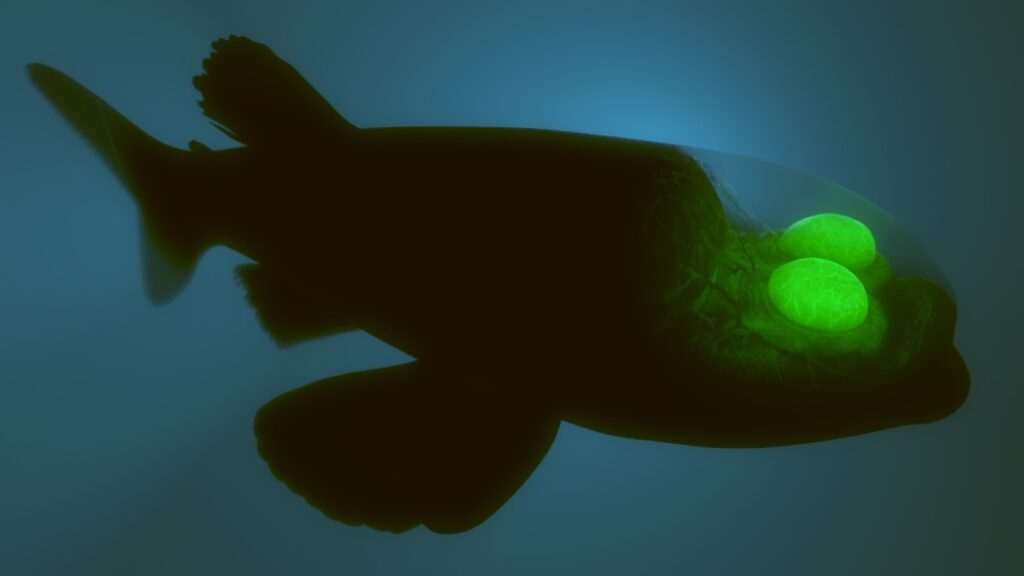
Also known as the spook fish, the barreleye fish has a transparent head filled with fluid, through which you can see its tubular, upward-pointing eyes. These bizarre eyes can rotate within the transparent dome, allowing the fish to look up for prey or forward to swim.
Viperfish
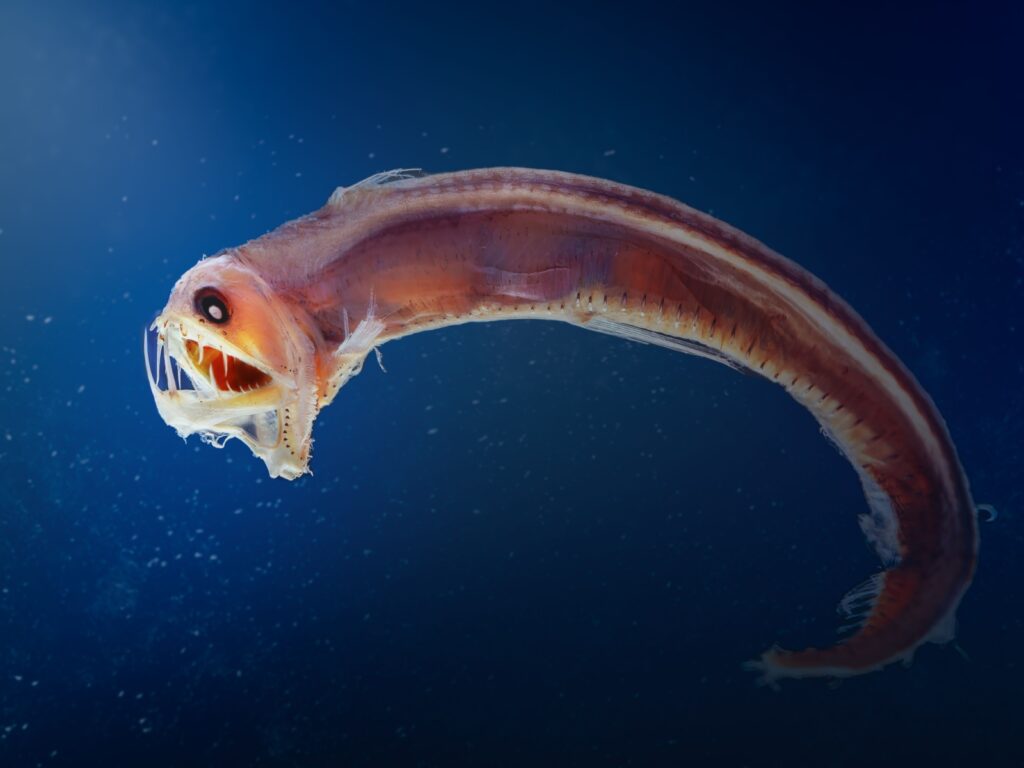
With its needle-like teeth and hinged lower jaw, the viperfish is a true monster of the deep. Its teeth are so large that they won’t fit inside its mouth, protruding out even when its jaws are closed. The viperfish uses a light-producing organ to lure prey close enough to snatch.
Zombie Worms
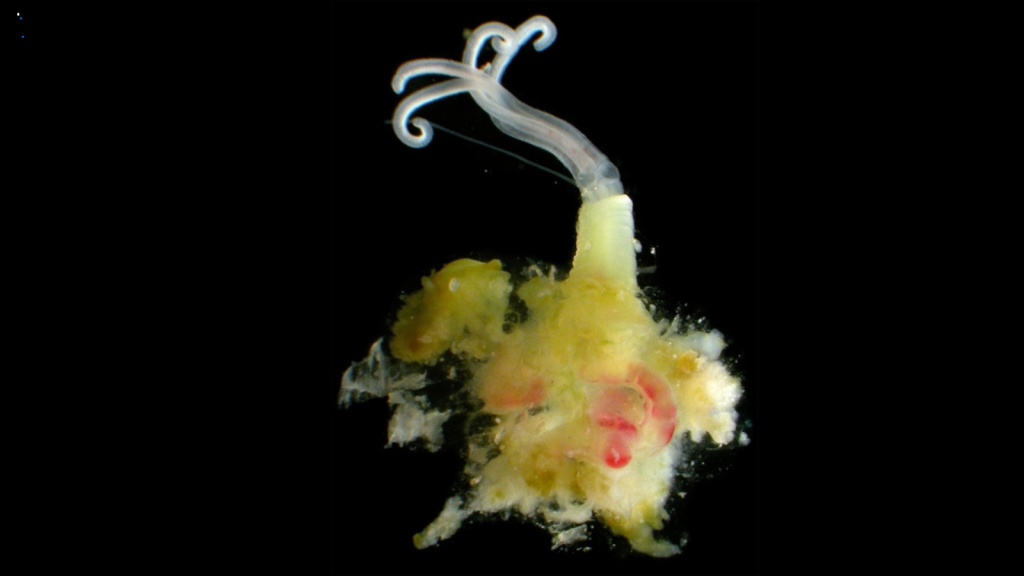
These bizarre creatures, also known as bone-eating snot flowers, feed on the bones of dead whales and other large marine animals that sink to the ocean floor. They secrete an acid that dissolves bone, allowing them to absorb the nutrients. Despite their nickname, they’re not actually worms but a type of marine worm.
Fangtooth Fish

The fangtooth fish has the largest teeth proportional to body size of any fish in the ocean. Its teeth are so large that it can’t fully close its mouth. Despite its terrifying appearance, the fangtooth is quite small, usually less than 6 inches long.
Giant Tube Worms
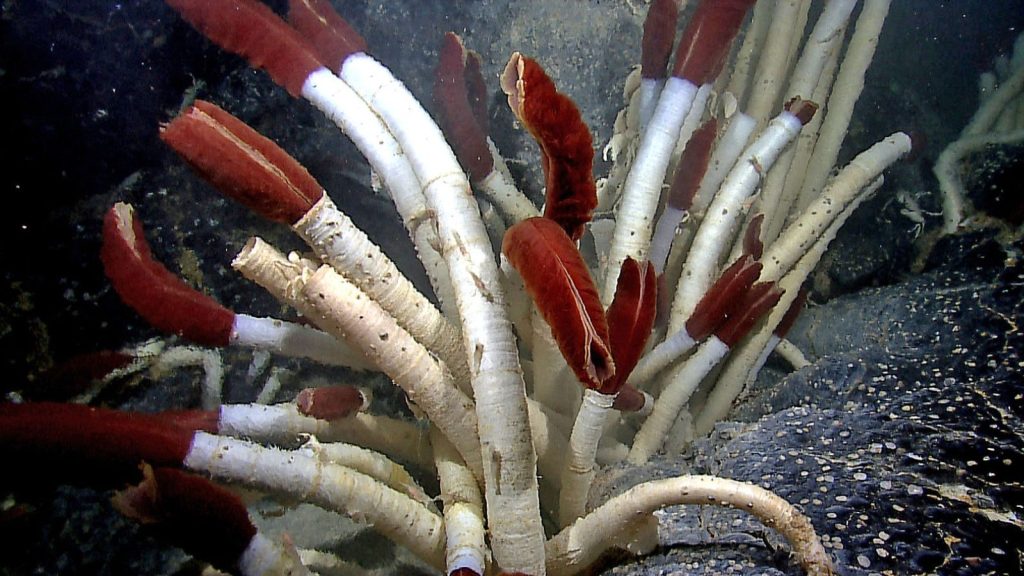
These massive worms can grow up to 8 feet long and live around hydrothermal vents on the ocean floor. They have no mouth or digestive system, instead relying on bacteria living inside them to convert chemicals from the vents into food.
Hatchetfish
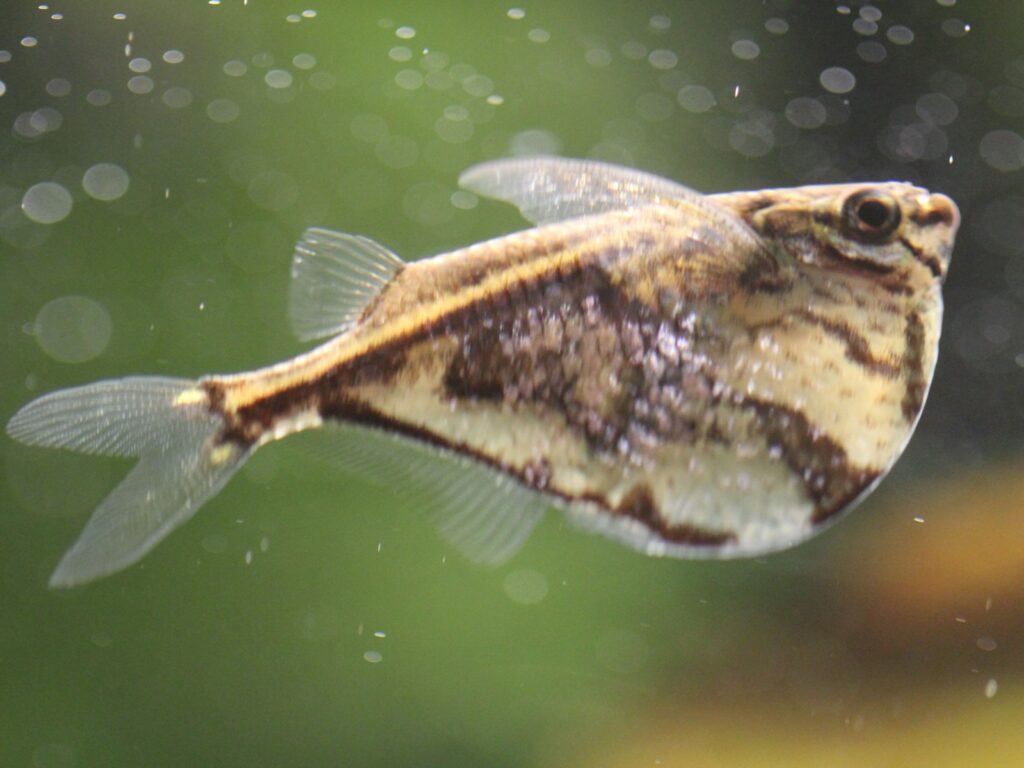
Named for their hatchet-like shape, these small fish have large, upward-facing eyes and bioluminescent organs on their bellies. The light organs help them blend in with the faint sunlight from above, making them nearly invisible to predators below.
Telescope Octopus
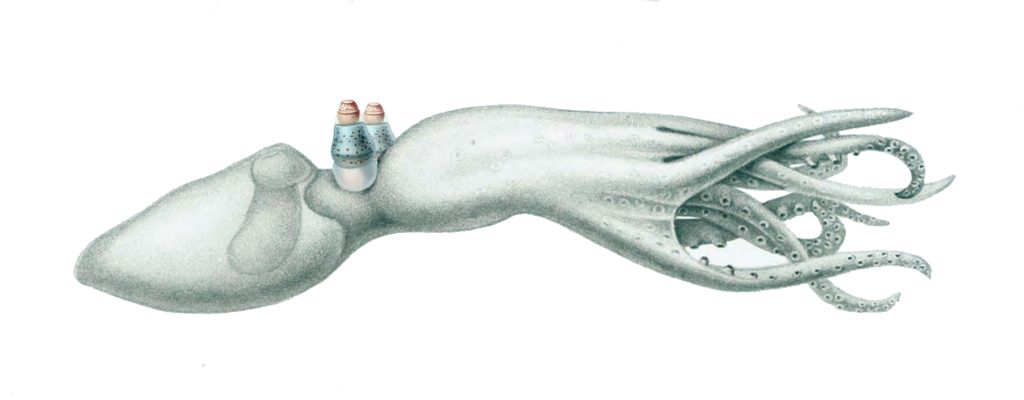
This rare octopus gets its name from its distinctive eyes, which stick out from its head on short stalks like telescopes. Its body is almost completely transparent, making it nearly invisible in the water. Very little is known about this elusive creature due to the extreme depths at which it lives.
Chimaera
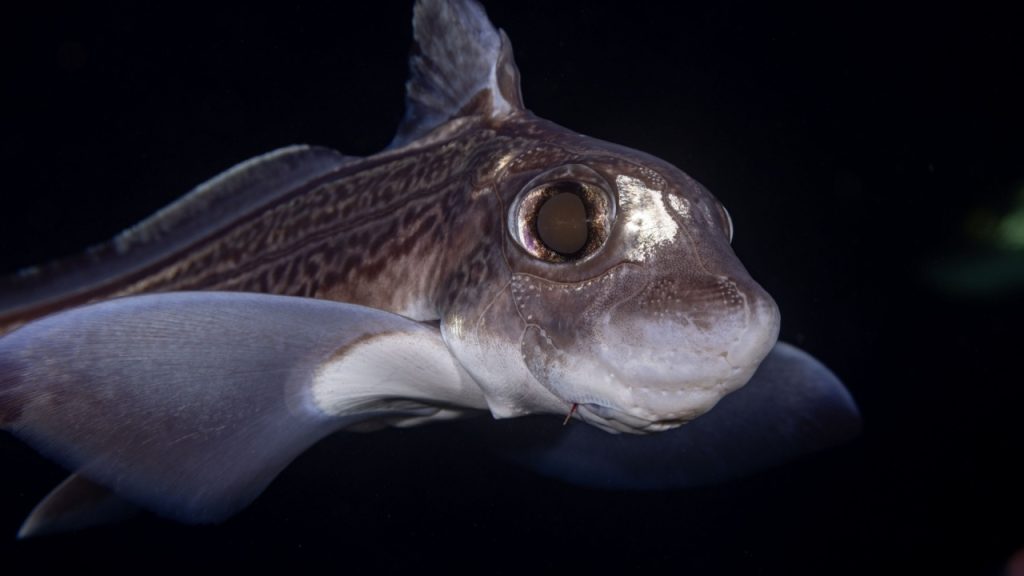
Also known as ghost sharks, chimaeras are cartilaginous fish related to sharks and rays. They have a long, whip-like tail and a venomous spine in front of their dorsal fin. Their oddly shaped heads and large, green eyes give them an eerie, otherworldly appearance.
Seadevil Anglerfish

The seadevil is a type of anglerfish known for its extremely large mouth filled with sharp, translucent teeth. Females are much larger than males and have a bioluminescent lure protruding from their heads. Males are tiny in comparison and fuse to the female’s body, essentially becoming a parasite.
Benthocodon

This small jellyfish looks like a floating, transparent umbrella. It has long, ribbon-like tentacles that trail behind it as it swims. Benthocodons are bioluminescent, producing their own light in the darkness of the deep sea.
Deep-Sea Dragonfish
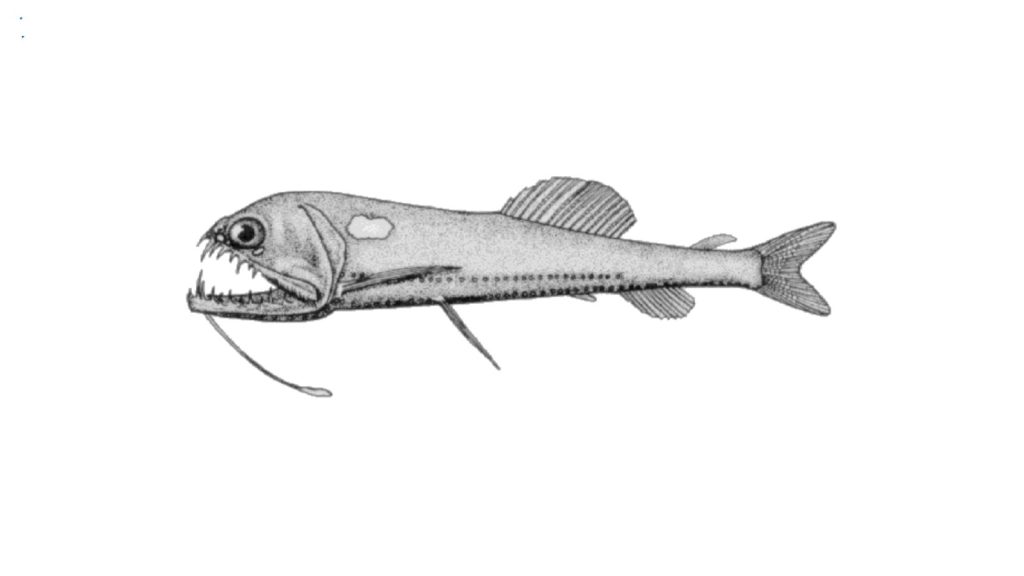
The deep-sea dragonfish is a fearsome predator with a mouth full of fang-like teeth. It has a long, barbel-like chin appendage that it uses as a lure to attract prey. Most interestingly, it can produce red light, which is invisible to most deep-sea creatures, allowing it to hunt without being seen.
Mariana Snailfish
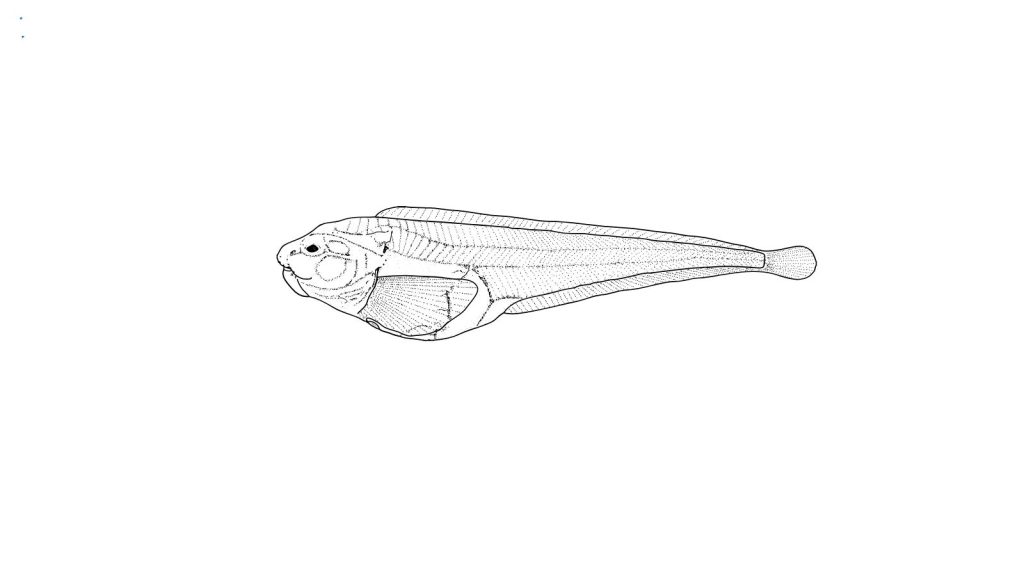
Recently discovered, the Mariana snailfish is one of the deepest-living fish ever found. Despite living at crushing depths, it has a translucent, gelatinous body that helps it withstand the extreme pressure. Its ghost-like appearance and ability to thrive in such an extreme environment make it a true marvel of deep-sea adaptation.



